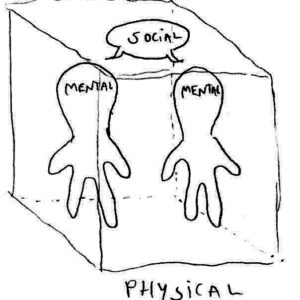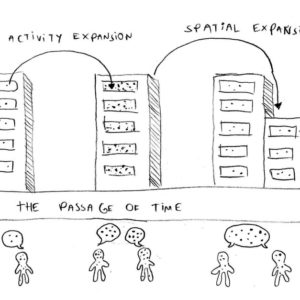participation
-

The socialization of the design space
The expansion of the design object from materials to experiences is synchronized with the socialization of the design space. The design space can be understood in three ways: Saying that, I believe there is a strong link between the physical, the social and the mental, one feeding the other. In that sense, the design space […] - Mar 16, 2015 -

Sketching an expansive design definition
While writing my thesis, I make visual and textual sketches. Most of the times, these sketches are replaced later by a well-thought text, typically without the pictures. The sketches are removed because they cannot withstand scientific criticism, but they might be useful to communicate to a broader audience. With that in mind, I’m publishing the […] - Jan 12, 2015 -

Low-tech to high-tech visualization
The World Usability Day was for the first time organized here at the University of Twente. In this event, I shared a practical output of my PhD research: a method to gather user data using low-tech materials. The method consists of collecting data through low-tech visualization and using the data to build high-tech visualizations, following […] - Nov 25, 2014 -
 I read the reports from the Change by Design workshops in Brazil, Kenya and Ecuador and decide to join the next in the UK. These workshops are organized by Architecture Sans Frontières UK, a non-profit that aims to bring forth community engagement in architecture practice and teaching. The workshops are based on participatory design sessions […] - Sep 18, 2014
I read the reports from the Change by Design workshops in Brazil, Kenya and Ecuador and decide to join the next in the UK. These workshops are organized by Architecture Sans Frontières UK, a non-profit that aims to bring forth community engagement in architecture practice and teaching. The workshops are based on participatory design sessions […] - Sep 18, 2014 -

Visualization Tools for Self-Representation in Healthcare Design
Van Amstel, F.M.C; Hartman, T; Van der Voort, M; Dewulf, G.P.M.R. Visualization Tools for Self-Representation in Healthcare Design. In: Morello, E., Piga, B.E.A. (eds.). (2013). Envisioning Architecture: Design, Evaluation, Communication – Proceedings of the 11th conference of the European Architectural Envisioning Association, Milano, 25-28 September 2013. Roma: Edizioni Nuova Cultura. P 507-514 - Aug 8, 2013 -

When Participatory Design makes sense
In the course of writing my PhD proposal to the disciplinary council of my faculty, I had to define which kind of project could be appropriate for doing Participatory Design research. Not every project can be participatory or profit from being participatory. There are specific situations where Participatory Design makes sense, but I couldn’t find […] - Jun 4, 2012 -

Spreading participation into the routine
Participatory Design usually happens in ritualized gathering where participants enact their political positions and build things together. The workshop creates an ephemeral horizontal power structure where people from the lowest level can work with medium an top level of the hierarchy. From what I observe so far in the Healthcare Construction Industry, where I conduct […] - Mar 1, 2012